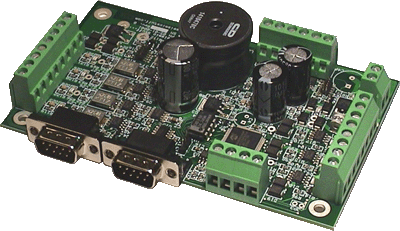|
 Tailbuoys in Marine Seismic have grown into an essential and critical piece of survey equipment. They have become the
home of complex positioning and telemetry systems, a navigation light as well as other more exotic accessories.
Many of these systems have become critical to the operation of the survey, so a reliable tailbuoy solution is required to ensure
and monitor trouble free performance of these devices.
Tailbuoys in Marine Seismic have grown into an essential and critical piece of survey equipment. They have become the
home of complex positioning and telemetry systems, a navigation light as well as other more exotic accessories.
Many of these systems have become critical to the operation of the survey, so a reliable tailbuoy solution is required to ensure
and monitor trouble free performance of these devices.
Seismic Stuff has developed an advanced tailbuoy electronic module that addresses all of the operational demands required
for a tailbuoy electroic solution, and more, on a single board (PCB).
The electronic module is a multi layer PCB board that replaces all existing tailbuoy electronics. The PCB interfaces to the
internal wiring of the tailbuoy via screw terminals mounted on the edge of the PCB itself (2.5mm2 Max Conductor size) such that
there are no internal requirements for a separate terminal strip with a standard configuration.
The board provides five charging input connections:
Streamer power input. This is able to interface directly to the streamer power output. This input
can be used for AC or DC input. The input current is limited so that it can be used with streamer modules that provide
limited power. The streamer power input also has a processor controlled soft start to ensure low current inrush on startup.
The streamer power input has a filter inline to ensure no noise can propogate onto the power lines of the streamer.
All wire connections to the streamer are protected against lightening strike in case the tailbuoy is struck itself. This ensures,
the streamer and onboard systems are protected.
Input for Generator. This input can interface to underwater generators. This input is actively protected from over
voltage/overload.
Input for Solar Power. This input can be used to interface to 12V solar panels.
Two additional Inputs for Auxiliary Power. These inputs are capable of interfacing to a 12V auxiliary power input to
enable future power source additions as they become available (input specifications are the same as Solar
Power). Typically one of these inputs is used as an external input connected to a 12 V unregulated
brick power supply when the tail buoy is on board for long periods to maintain battery charge.
All power input sources are switchable such that they can be enabled or disabled remotely or as
configured with initial system setup.
The board is capable of charging a 12V lead acid battery at up to 6A total current (configurable).
The charging circuit uses the charging state model of bulk, absorbtion, float and charge suspended.
The state model actively measures and takes into account the battery temperature
and also uses a remote voltage sensing input to ensure optimal safe charging of the battery.
The board provides four individual switched power outputs. These are identical in operation but are typically assigned
as for the RGPS module, the tailbuoy light and two additional auxiliary outputs for future connectivity. Each of these
outputs are individually protected by automatically resettable fuses.
The board also has an input for a remote power off switch which will turn off all outputs if activated.
This switch input is typically be interfaced to a magnetic switch so that the tail buoy can be shut
down with the application of an external magnet, typically when the unit is recovered.
All power outputs are switchable such that they can be enabled or disabled remotely via the vessel
command protocol or as configured with the initial system setup.
In addition to the above functions, the board also actively monitors current drawn on all input sources and
current delivered to all output sources, the battery voltage is also be monitored. These voltage and
current values are available either using a computer terminal attached directly to the board
(typically when fault finding with the tail buoy on board) or transmitted down the streamer using an
auxiliary pair via the vessel command protocol (for monitoring performance whilst in production).
The board interfaces to the streamer auxiliary pair via a 2 wire bidirectional slew rate
limited RS485 protocol providing communication to the card in two directions.
In addition the board provides a separate serial port which is capable of interfacing to an external
RS232 device and multiplexing the data received onto the streamer auxiliary pair. This serial port can be configured
to interface to future client features on the tail buoy.
Ordering Information:
- 05-01-0001 Smart Tailbuoy Power and Control Board
To request a quotation, or for further information, please contact Seismic Stuff...
|

